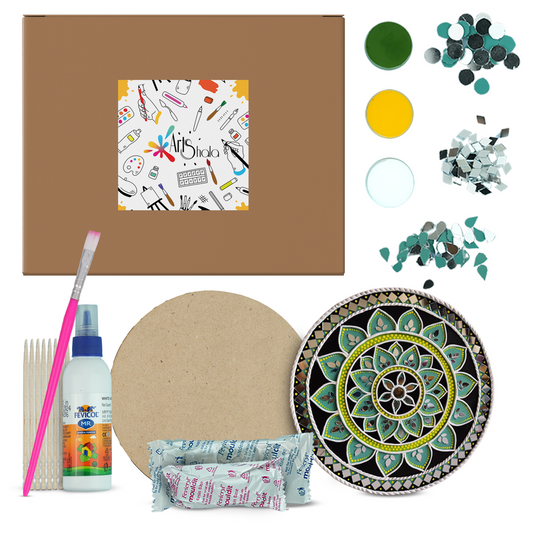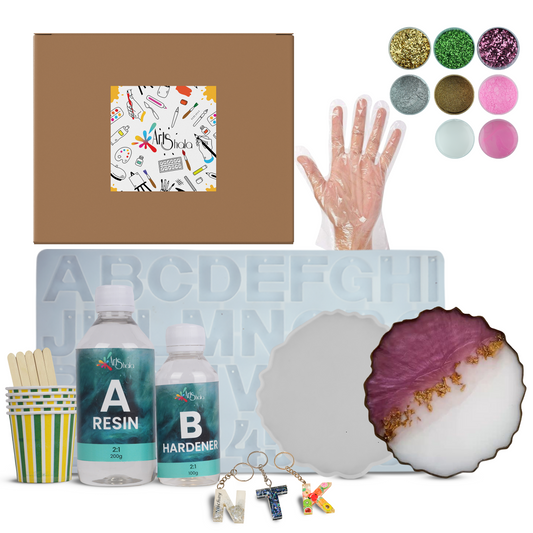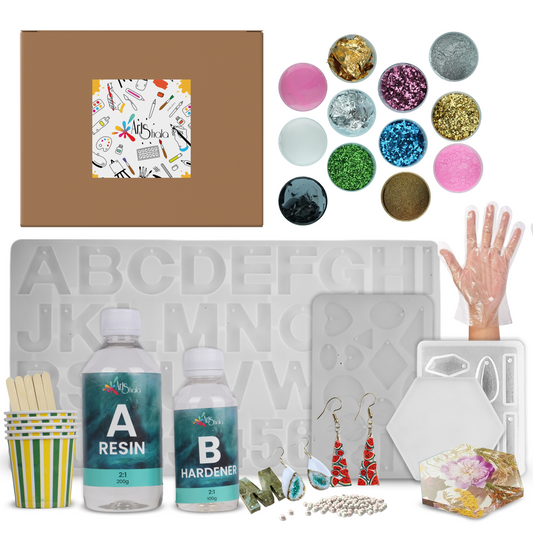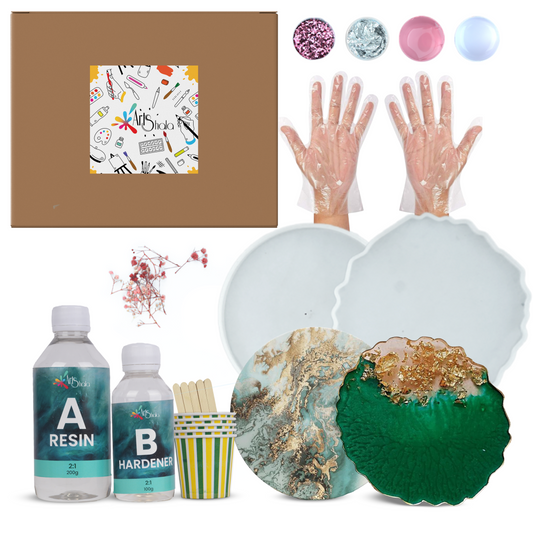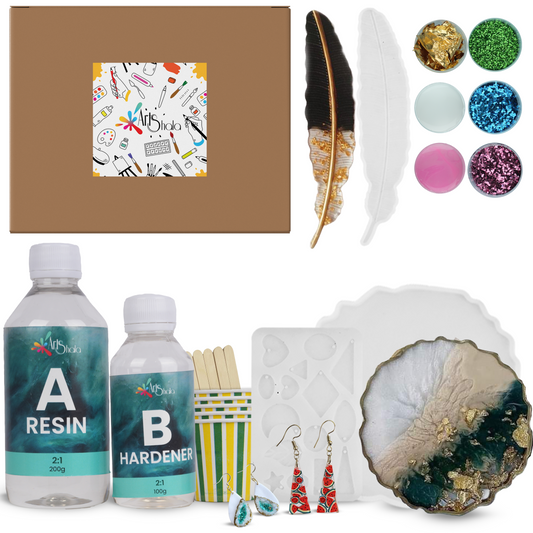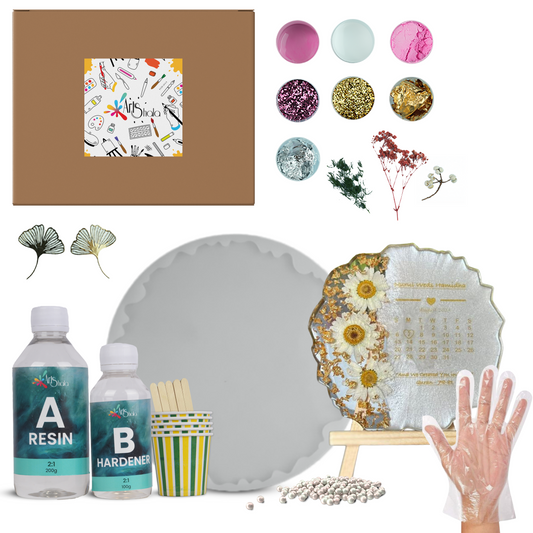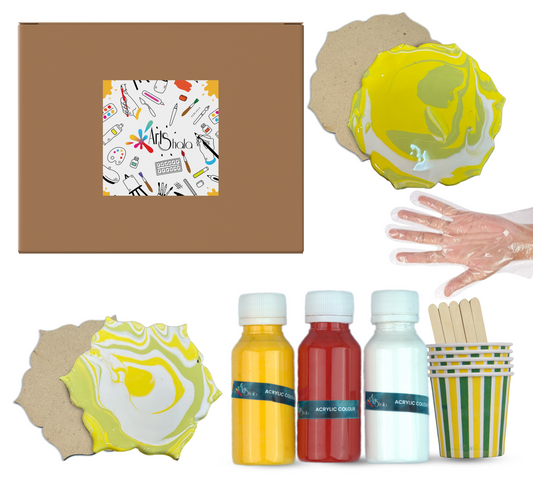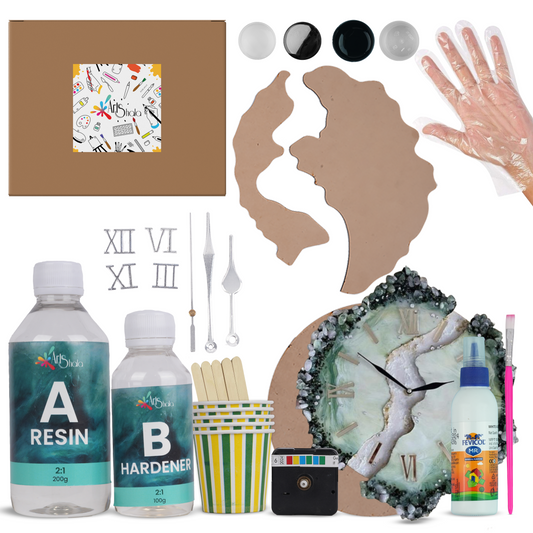How to Paint Light & Shade in Acrylics? Step-by-Step Guide
Understanding light and shade is essential for creating depth, dimension, and realism in acrylic paintings. By mastering the techniques of painting light and shade, you can bring your artwork to life and captivate viewers with your skilful use of colour and contrast.
If you're new to acrylic painting or want to enhance your skills, consider joining an acrylic paint workshop for hands-on experience and expert guidance, allowing you to practice and enhance your techniques for painting light and shade in acrylics. In this blog, we will talk about the importance of understanding light and shade in acrylic painting and provide you with a step-by-step guide to achieve stunning results.
Understanding Light and Shade in Acrylic Painting
In art, light refers to the illumination that falls upon objects, revealing their form, texture, and colour. Shade, on the other hand, occurs when an object blocks or absorbs light, resulting in areas of darkness. By understanding how light behaves and interacts with various surfaces, artists can accurately depict the play of light and shadow in their paintings.
How Does Light Interact with Objects?
Light interacts differently with objects, depending on their shape, texture, and reflective properties. For example:
- Smooth surfaces reflect more light and create brighter highlights.
- Rough or textured surfaces scatter light, resulting in diffused highlights.
- Transparent or translucent objects allow light to pass through, creating interesting effects.
Key Role of Contrast in Creating Depth and Dimension in Paintings
Contrast plays a vital role in capturing the essence of light and shadow. By juxtaposing areas of light against areas of shadow, artists can create a perception of depth and three-dimensionality in their paintings. The greater the contrast between light and shade, the more dramatic the effect. Artists use various techniques to achieve contrast:
- Value: Varying the range of lights and darks creates contrast.
- Colour temperature: Warm colours advance while cool colours recede, allowing for subtle shifts in depth perception.
- Edges: Sharp edges draw attention, while soft edges suggest a softer transition between areas.
By mastering these techniques, artists can effectively capture the interplay of light and shade, bringing their acrylic paintings to life.
Step-by-Step Guide: Painting Light and Shade in Acrylics
Understanding how to paint light and shade effectively is necessary for creating depth and dimension in your acrylic paintings. Here, we will explore the process of painting light and shade in acrylics, starting with blocking in the main shapes and values.
Blocking in the Main Shapes and Values
The initial stage of the painting involves establishing your artwork's overall light and dark pattern. This is often referred to as “blocking in.” Here's how you can approach this step:
- Start by sketching the basic shapes of your object on the canvas using a pencil or a thin brush. Focus on capturing the main forms and their relationship to one another.
- Next, identify the areas where light hits your subject and casts shadows. Observe how light reacts with objects in real life to determine these areas accurately.
- Mix your paints to create a range of values from light to dark. Use a limited palette of colours that complement each other well. Remember, achieving a good balance between lights and darks is key to creating a convincing sense of volume.
- If desired, begin by blocking in the darkest values, using broad brushstrokes or even a palette knife. Gradually work your way towards lighter values, gradually building up the form and structure of your subject.
- Pay close attention to transitions between different values, ensuring they are smooth and gradual. This will help create a more realistic appearance of light and shade.
- Continually step back from your painting to assess its overall composition and value distribution. Make adjustments as needed to achieve a pleasing balance between lights and darks.
Building Form and Volume with Layering Techniques
Layering is a common technique in acrylic painting that allows you to build up colours and create depth gradually. Here's how you can use layering to enhance the form and volume of your subject:
- Once you have blocked in the main shapes and values, allow the paint to dry completely before proceeding to the next step. This will prevent unwanted blending and smudging of colours.
- Mix a slightly lighter or darker version of the base colour, depending on whether you want to highlight or shade a particular area.
- Using a brush or palette knife, apply this new colour over the dried base layer, focusing on the areas where you want to add more dimension.
- Blend the edges of the new colour with the underlying layer using gentle strokes or a dry brush technique. This will create smooth transitions between different values, making the form appear more realistic.
- Repeat this process as necessary, gradually building up layers of paint to achieve the required level of detail and depth.
- Remember to focus on the direction and intensity of light when applying each layer. This will help create a sense of volume and visually interest your subject.
Mastering layering techniques can bring depth, dimension, and realism to your acrylic paintings. Practice this process on various subjects to refine your skills and develop your personal artistic style.
Creating Highlights, Shadows, and Reflected Light
Adding highlights, shadows, and reflected light is crucial in creating realistic form and depth in your paintings. Study the subject closely to identify areas where the light hits directly (highlights), areas that are in shadow due to the absence or blocking of light (shadows), and areas where light bounces off nearby objects onto the subject (reflected light). Use lighter or darker shades of paint accordingly to depict these variations.
Luminous Highlights and Deep Shadows
The key to creating striking highlights and shadows lies in understanding the interplay of light and dark. By skillfully applying layers of paint, artists can achieve luminous highlights that bring a sense of vitality to their subjects. Deep, rich shadows add depth and drama to the painting, enhancing its overall impact.
Incorporating Reflected Light
Capturing the subtle nuances of reflected light adds realism and dimensionality to acrylic paintings. By observing how light bounces off surfaces and objects, artists can infuse their artworks with a heightened sense of depth and texture.
Through this, you can master the art of capturing light on canvas, adding depth with shadows, and enhancing dimension with reflected light. These techniques are fundamental in elevating acrylic paintings' visual impact and realism.
Perfecting Your Painting with Light and Shade
The final touches of a painting are crucial in bringing the artwork to life and creating a sense of realism. These finishing details, especially when it comes to light and shade, can significantly enhance the overall impact of your acrylic painting. Here are some key points to consider when perfecting your artwork:
Importance of Finishing Details
Paying attention to the tiniest details is crucial for polishing your artwork. This includes adding subtle highlights and shadows to create depth and dimension in your painting. You can recreate these effects on your canvas by carefully observing the play of light and shadow in your reference image or scene.
Adding Delicate Highlights and Shadows
One way to achieve a realistic depiction of light and shade is by strategically incorporating delicate highlights and shadows. For highlights, use a lighter colour or add a touch of white to the base colour to create areas where light hits the subject directly. Shadows can be made using darker tones or adding a complementary colour to the base colour.
Emphasis and Balance
The final touches with light and shade help emphasise certain areas of your painting. By selectively applying highlights and shadows, you can draw the viewer's attention to focal points or create a look of balance throughout the composition. Remember that subtlety is essential; avoid overdoing it with excessive highlights or shadows that may detract from the overall effect.
Focusing on these final details can elevate your acrylic painting to a new level of realism and captivate viewers with its three-dimensional quality.
Conclusion
In conclusion, mastering the art of light and shade in acrylic painting is essential for creating depth, dimension, and realism. By observing and recreating the interplay of light and shadow in your reference image or scene, strategically adding delicate highlights and shadows, and using them to emphasise focal points or create balance, you can bring your artwork to life.
The importance of light and shade in acrylic painting cannot be emphasised enough. They add vitality to your artwork, capturing the viewer's attention and eliciting emotions. If you want to learn more about acrylic painting, Contact Us on Arts Shala today and take the next step in your artistic journey!



